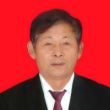
жұӮз”өдё“дёҡиӢұиҜӯзҝ»иҜ‘пҝҘпҝҘ
Athree-phaseelectriccircuitisenergizedbythreealternatingemfsofthesamefrequencyanddiff...
A three-phase electric circuit is energized by three alternating emfs of the same frequency and differing in time phase by 120 electrical degrees. Three such sine-wave emfs are shown in Fig. 1-1B-1. These emfs are generated in three sets of coils are mounted 120 electrical degrees apart on the generator armature. The coil ends may all be brought out of the generator to form three separate single-phase circuits. However, The coils are ordinarily interconnected either internally or externally to form a three wire or four-wire three-phase system.
Active electrical elements occur in two basic forms: Voltage sources and current sources. In their ideal form, voltage sources generate a constant voltage independent of the current drawn form the source. The aforementioned battery and generator are regarded as voltage sources since their voltage is essentially constant with load, On the other hand, current sources produce a current whose magnitude is independent of the load connected to the source. Although current sources are not as familiar in practice, the concept does find wide use in representing an amplifying device, such as the transistor, by means of an equivalent electrical circuit. Symbolic representations of voltage and current sources are shown in Fig. 1-1A-2. еұ•ејҖ
Active electrical elements occur in two basic forms: Voltage sources and current sources. In their ideal form, voltage sources generate a constant voltage independent of the current drawn form the source. The aforementioned battery and generator are regarded as voltage sources since their voltage is essentially constant with load, On the other hand, current sources produce a current whose magnitude is independent of the load connected to the source. Although current sources are not as familiar in practice, the concept does find wide use in representing an amplifying device, such as the transistor, by means of an equivalent electrical circuit. Symbolic representations of voltage and current sources are shown in Fig. 1-1A-2. еұ•ејҖ
2010-11-03 В· TAиҺ·еҫ—и¶…иҝҮ1037дёӘиөһ
зҹҘйҒ“е°Ҹжңүе»әж ‘зӯ”дё»
еӣһзӯ”йҮҸпјҡ668
йҮҮзәізҺҮпјҡ0%
её®еҠ©зҡ„дәәпјҡ559дёҮ
е…іжіЁ
![]()

еұ•ејҖе…ЁйғЁ
дёүзӣёз”өжәҗз”өи·Ҝз”ұ3дёӘзӣёеҗҢйў‘зҺҮпјҢж—¶й—ҙе·®дёә120еәҰз”өи§’еәҰзҡ„з”өеҠЁеҠҝй©ұеҠЁгҖӮиҝҷз§Қз”өеҠЁеҠҝзҡ„дёүдёӘжӯЈејҰжіўж ·ејҸеҰӮеӣҫ1-1B-1жүҖзӨәгҖӮиҝҷдәӣз”өеҠЁеҠҝз”ұеҸ‘з”өжңәз”өжһўдёҠе®үиЈ…зҡ„еҲҶйҡ”120еәҰз”өи§’еәҰзҡ„дёүз»„зәҝеңҲдә§з”ҹгҖӮзәҝеңҲзҡ„жң«з«ҜеқҮеҸҜд»Ҙд»ҺеҸ‘з”өжңәеҶ…еҚ•зӢ¬еј•еҮәд»ҘеҪўжҲҗдёүдёӘеҲҶзҰ»зҡ„еҚ•зӣёз”өи·ҜгҖӮйҖҡеёёзәҝеңҲеңЁеҶ…йғЁжҲ–еӨ–йғЁиҝӣиЎҢдә’иҝһд»ҘеҪўжҲҗдёүзӣёдёүзәҝжҲ–дёүзәҝеӣӣзәҝзі»з»ҹгҖӮ
дё»еҠЁпјҲжңүжәҗпјүејҸзҡ„з”өж°”е…ғ件йҖҡеёёд»ҘдёӨз§Қеҹәжң¬еҪўејҸеҮәзҺ°пјҡз”өеҺӢжәҗжҲ–з”өжөҒжәҗгҖӮзҗҶжғіжғ…еҶөдёӢпјҢж— и®әд»Һз”өеҺӢжәҗеҗёеҸ–еӨҡеӨ§зҡ„з”өжөҒпјҢе…¶иҫ“еҮәз”өжәҗеқҮдҝқжҢҒжҒ’е®ҡгҖӮдёҠйқўжүҖи®Ізҡ„з”өжұ еҸҠеҸ‘з”өжңәеҚіеҸҜи§Ҷдёәз”өеҺӢжәҗпјҢеӣ дёәе®ғ们зҡ„иҫ“еҮәз”өеҺӢйҡҸиҙҹиҪҪеҸҳеҢ–еҹәжң¬дёҠжҳҜжҒ’е®ҡзҡ„пјҢд»ҺеҸҰдёҖж–№йқўи®ІпјҢз”өжөҒжәҗдә§з”ҹзҡ„з”өжөҒеӨ§е°ҸдёҺжҺҘеңЁе…¶дёҠзҡ„иҙҹиҪҪеӨ§е°ҸжІЎжңүе…іиҒ”гҖӮе°Ҫз®ЎеңЁе®һйҷ…дёӯз”өжөҒжәҗ并дёҚдёәдәәжүҖзҶҹзҹҘпјҢиҝҷз§ҚжҰӮеҝөеңЁиЎЁеҫҒж”ҫеӨ§иЈ…зҪ®ж—¶еҚҙжңүеҫҲе№ҝжіӣзҡ„еә”з”ЁпјҢдҫӢеҰӮжҷ¶дҪ“з®ЎпјҢйҖҡиҝҮзӯүж•Ҳз”өи·ҜпјҢз”өеҺӢжәҗеҸҠз”өжөҒжәҗзҡ„еӣҫеҪўеҢ–з¬ҰеҸ·еҰӮеӣҫ1-1A-2жүҖзӨәгҖӮ
дё»еҠЁпјҲжңүжәҗпјүејҸзҡ„з”өж°”е…ғ件йҖҡеёёд»ҘдёӨз§Қеҹәжң¬еҪўејҸеҮәзҺ°пјҡз”өеҺӢжәҗжҲ–з”өжөҒжәҗгҖӮзҗҶжғіжғ…еҶөдёӢпјҢж— и®әд»Һз”өеҺӢжәҗеҗёеҸ–еӨҡеӨ§зҡ„з”өжөҒпјҢе…¶иҫ“еҮәз”өжәҗеқҮдҝқжҢҒжҒ’е®ҡгҖӮдёҠйқўжүҖи®Ізҡ„з”өжұ еҸҠеҸ‘з”өжңәеҚіеҸҜи§Ҷдёәз”өеҺӢжәҗпјҢеӣ дёәе®ғ们зҡ„иҫ“еҮәз”өеҺӢйҡҸиҙҹиҪҪеҸҳеҢ–еҹәжң¬дёҠжҳҜжҒ’е®ҡзҡ„пјҢд»ҺеҸҰдёҖж–№йқўи®ІпјҢз”өжөҒжәҗдә§з”ҹзҡ„з”өжөҒеӨ§е°ҸдёҺжҺҘеңЁе…¶дёҠзҡ„иҙҹиҪҪеӨ§е°ҸжІЎжңүе…іиҒ”гҖӮе°Ҫз®ЎеңЁе®һйҷ…дёӯз”өжөҒжәҗ并дёҚдёәдәәжүҖзҶҹзҹҘпјҢиҝҷз§ҚжҰӮеҝөеңЁиЎЁеҫҒж”ҫеӨ§иЈ…зҪ®ж—¶еҚҙжңүеҫҲе№ҝжіӣзҡ„еә”з”ЁпјҢдҫӢеҰӮжҷ¶дҪ“з®ЎпјҢйҖҡиҝҮзӯүж•Ҳз”өи·ҜпјҢз”өеҺӢжәҗеҸҠз”өжөҒжәҗзҡ„еӣҫеҪўеҢ–з¬ҰеҸ·еҰӮеӣҫ1-1A-2жүҖзӨәгҖӮ
2010-11-02 В· зҹҘйҒ“еҗҲдјҷдәәж•ҷиӮІиЎҢ家
 зҘһйҫҷ118
зҘһйҫҷ118
зҹҘйҒ“еҗҲдјҷдәәж•ҷиӮІиЎҢ家
йҮҮзәіж•°пјҡ1950
иҺ·иөһж•°пјҡ25166
иҮӘ1981е№ҙд»ҘжқҘгҖӮдёҖзӣҙеңЁеҲқзә§дёӯеӯҰж•ҷиӢұиҜӯ
еҗ‘TAжҸҗй—® з§ҒдҝЎTA
е…іжіЁ
![]()

еұ•ејҖе…ЁйғЁ
дёүзӣёз”өи·ҜжҳҜеҸ—жҝҖдёүдёӘдәӨжӣҝеҠЁеҠҝзӣёеҗҢзҡ„йў‘зҺҮе’ҢдёҚеҗҢж—¶й—ҙзӣё120з”өж°”еәҰгҖӮдёүжӯЈејҰжіўеҠЁеҠҝеҲ—еӣҫгҖӮ1-1B-1гҖӮдә§з”ҹиҝҷдәӣеҠЁеҠҝеңЁдёүз»„еҚ·е®үиЈ…120з”өж°”еәҰзҡ„еҸ‘з”өжңәзӣ”з”ІгҖӮйҷӨдәҶзәҝеңҲз»“жқҹйғҪеҸҜд»Ҙж‘Ҷи„ұеҸ‘з”өжңәеҪўжҲҗдёүдёӘзӢ¬з«Ӣзҡ„еҚ•зӣёз”өи·ҜгҖӮ然иҖҢ,еҚ·йҖҡеёёдә’иҒ”ж— и®әеҶ…йғЁиҝҳжҳҜеӨ–йғЁеҪўжҲҗдёүдёқжҲ–еӣӣзәҝдёүзӣёзі»з»ҹгҖӮ
з§ҜжһҒзҡ„з”өеҷЁеҸ‘з”ҹеңЁдёӨз§Қеҹәжң¬еҪўејҸзҡ„з”өеҺӢжәҗе’Ңз”өжөҒжәҗгҖӮзҗҶжғізҡ„еҪўејҸ,з”өеҺӢжәҗдә§з”ҹдёҖдёӘжҒ’еҺӢзӢ¬з«ӢдәҺеҪ“еүҚеј•еҮәеҪўејҸзҡ„жқҘжәҗгҖӮдёҠиҝ°з”өжұ е’ҢеҸ‘з”өжңәиў«и®ӨдёәжҳҜз”ұдәҺ他们зҡ„з”өеҺӢжәҗз”өеҺӢйҡҸиҚ·иҪҪжң¬иҙЁдёҠжҳҜдёҚеҸҳзҡ„,еҸҰдёҖж–№йқў,з”өжөҒжәҗдә§з”ҹз”өжөҒжҳҜзӢ¬з«Ӣзҡ„,е…¶еӨ§е°Ҹзҡ„иҙҹиҚ·иҝһжҺҘеҲ°жәҗгҖӮе°Ҫз®Ўзӣ®еүҚ并дёҚзҶҹжӮүжқҘжәҗ,еңЁе®һи·өдёӯеҫ—еҲ°е№ҝжіӣдҪҝз”ЁжҰӮеҝө并代表ж”ҫеӨ§зҡ„и®ҫеӨҮ,дҫӢеҰӮжҷ¶дҪ“з®Ў,еҲ©з”Ёзӯүж•Ҳз”өи·ҜгҖӮз”өеҺӢе’Ңз”өжөҒзҡ„иұЎеҫҒз¬ҰеҸ·жқҘжәҗеҲ—еӣҫгҖӮ1-1A-2гҖӮ
з§ҜжһҒзҡ„з”өеҷЁеҸ‘з”ҹеңЁдёӨз§Қеҹәжң¬еҪўејҸзҡ„з”өеҺӢжәҗе’Ңз”өжөҒжәҗгҖӮзҗҶжғізҡ„еҪўејҸ,з”өеҺӢжәҗдә§з”ҹдёҖдёӘжҒ’еҺӢзӢ¬з«ӢдәҺеҪ“еүҚеј•еҮәеҪўејҸзҡ„жқҘжәҗгҖӮдёҠиҝ°з”өжұ е’ҢеҸ‘з”өжңәиў«и®ӨдёәжҳҜз”ұдәҺ他们зҡ„з”өеҺӢжәҗз”өеҺӢйҡҸиҚ·иҪҪжң¬иҙЁдёҠжҳҜдёҚеҸҳзҡ„,еҸҰдёҖж–№йқў,з”өжөҒжәҗдә§з”ҹз”өжөҒжҳҜзӢ¬з«Ӣзҡ„,е…¶еӨ§е°Ҹзҡ„иҙҹиҚ·иҝһжҺҘеҲ°жәҗгҖӮе°Ҫз®Ўзӣ®еүҚ并дёҚзҶҹжӮүжқҘжәҗ,еңЁе®һи·өдёӯеҫ—еҲ°е№ҝжіӣдҪҝз”ЁжҰӮеҝө并代表ж”ҫеӨ§зҡ„и®ҫеӨҮ,дҫӢеҰӮжҷ¶дҪ“з®Ў,еҲ©з”Ёзӯүж•Ҳз”өи·ҜгҖӮз”өеҺӢе’Ңз”өжөҒзҡ„иұЎеҫҒз¬ҰеҸ·жқҘжәҗеҲ—еӣҫгҖӮ1-1A-2гҖӮ
е·ІиөһиҝҮ
е·Іиё©иҝҮ<
иҜ„и®ә
收иө·
дҪ еҜ№иҝҷдёӘеӣһзӯ”зҡ„иҜ„д»·жҳҜпјҹ
жҺЁиҚҗеҫӢеёҲжңҚеҠЎпјҡ
иӢҘжңӘи§ЈеҶіжӮЁзҡ„й—®йўҳпјҢиҜ·жӮЁиҜҰз»ҶжҸҸиҝ°жӮЁзҡ„й—®йўҳпјҢйҖҡиҝҮзҷҫеәҰеҫӢдёҙиҝӣиЎҢе…Қиҙ№дё“дёҡе’ЁиҜў

